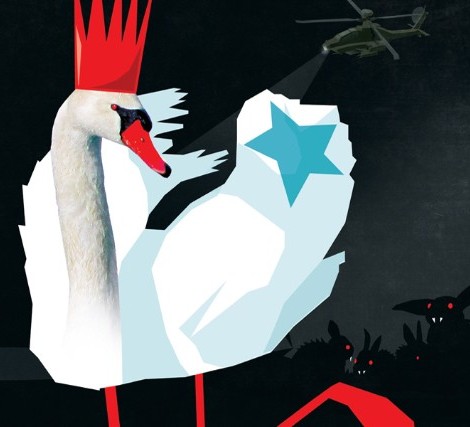Happily ever after…
08/07/2012
Though Oded Graf and Tossi Berg’s latest piece deals with fairytales, content is far darker than a Disney flick
When you read the words “Once upon a time…” a certain set of expectations is immediately put in place. There will be a good guy, a bad guy and some kind of quest for a better reality. In most fairytales, the journey is paid off in gold, goods, love or honor and the good guy always wins. No matter the country of origin, fairytales always set out to establish a destiny that is more predictable and certain than the reality of its writers and purveyors.
“The piece takes a lot of inspirations from fairytales,” said choreographer Oded Graf of the new creation Black Fairytale. The piece, which was created by Graf and long-time partner Yossi Berg, will enjoy its Israeli premier this week at the Suzanne Dellal Center.
The two performances are part of the Hot Dance Festival, which spans the summer months with eclectic dance programming.
“We have been very attracted to the fairytale genre and style. We felt that it holds a great interest because of the structure. There is always harmony that somehow breaks, there is also a very clear definition of good and bad; bad character, good character and there is always a very surreal atmosphere and all that is wrapped in a mysterious universe. We find these notions very relevant to our creative universe and to themes that we wished to deal with. We also find a lot of connections very relevant to the Israeli society and to the acute issues that are on the table, ones that we felt we wish to comment on,” Graf explained.
The piece was conceived over a three-month period as a co-production with Dansehallerne and Bora Bora Theaters in Denmark. The cast consists of the two choreographers and five European dancers, some of whom had worked on previous projects with Berg and Graf.
“We have been very lucky to continue the fruitful collaboration with the dancers. The feeling was that we are not starting from a zero point and we have a much deeper understanding of each other’s ideas. We felt confidence in their interpretation. It is also important for us to mention that in the show our dancers are not only dancing but also acting, singing and juggling.
We see this piece as a collaboration that we lead together with them,” said Graf.
Though the piece deals with fairytales, the content is far darker than that of a Disney flick. As in their previous works, namely Four Men, Alice, Bach, The Deer and Animal Lost, Berg and Graf have created a complete universe on stage, with a clear set of rules and a strong movement language. While their pieces are thoroughly entertaining, they also offer much food for thought.
“It is very important for us to say something with our art,” said Graf, “to offer our viewers a new perspective, a different way to look at our reality. We think the context of fairytales allows a lot of creative freedom. A main theme in the piece is the definition of a good or bad person; what makes someone good or bad and how we see the ‘other’ in that context. Another issue that comes up is our way to utopia. Did we lose the way? What are the obstacles on the way and why always when we find harmony, or the way to utopia, does something have to break and be destroyed?”
Though Berg and Graf are comfortable within the realm of dance theater, Black Fairytale marks an even further excursion into the meeting between the two forms. “It is the most theatrical piece we have ever done. It was again a great challenge and fun to find how to blend all of our passions from very physical dance to text and theater, to find the right musical score, to singing and so on. As performers it is a very demanding and challenging piece, one that has to be very precise every evening,” said Berg.
– Ori J. Lenkinski, The Jerusalem Post

Photo robin Hart